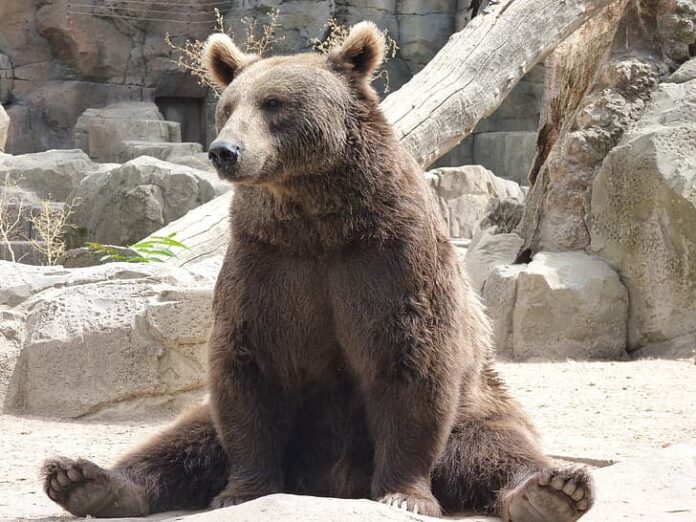Generally, Ursidae only consists of 3 members including brown bear, giant panda, and polar bear. When it comes to bear species, there are 8 of them in total that are spread across the globe. Bears inhabit various regions in Asia, Europe, North America, and South America. Feel free to take a look at the list of the bear species below and see where they come from.
1American Black Bear
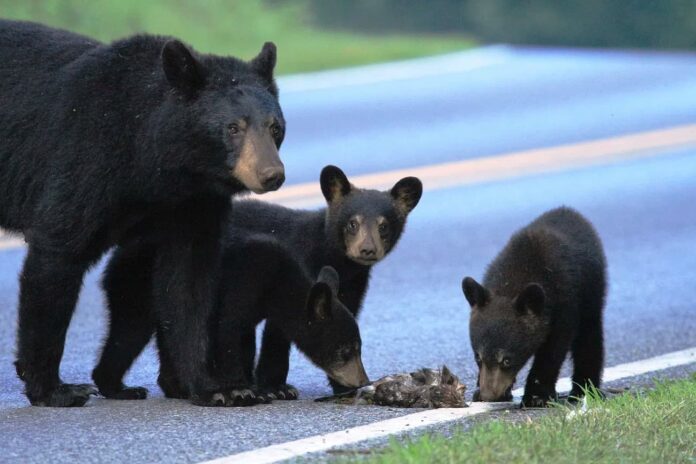
Where: North America
The American black bear aka black bear, is a medium-sized bear endemic to North America. It is actually the smallest and most widely spread bear species on this continent, especially in the forested regions. Adult males grow up to 1.2 to 2 meters tall, weighing up to 250 kilograms. The largest specimen ever recorded was 2.41 meters tall with a weight of around 500 kilograms. An American black bear has large paws with sharply curved foreclaws and dexterous intelligence. It is capable of manipulating door latches and opening screw-top jars, and it is extremely strong.
Despite the name, there are different color variations within their species depending on which region they live in. The most common is black, of course, but there are also blonde, cinnamon, dark chocolate brown, light brown, and even white. Their fur is soft with dense underfur and long coarse guard hairs.
Usually, these bears are found in areas with inaccessible terrain, large quantities of edible material, and thick understory vegetation. Their keen eyesight and hearing as well as excellent swimming skills are very beneficial for their fish hunting. However, 85% of their diet consists of vegetation. On top of that, they can even climb trees to feed, hibernate, rest, and escape enemies. Wait, a big strong bear escapes from an enemy? Grizzly bears. Grizzly bears are more aggressive and they are the main enemies of the black bears. For smaller cubs, they are vulnerable to birds or prey, foxes, and other black bears on some occasions.
2Asian Black Bear
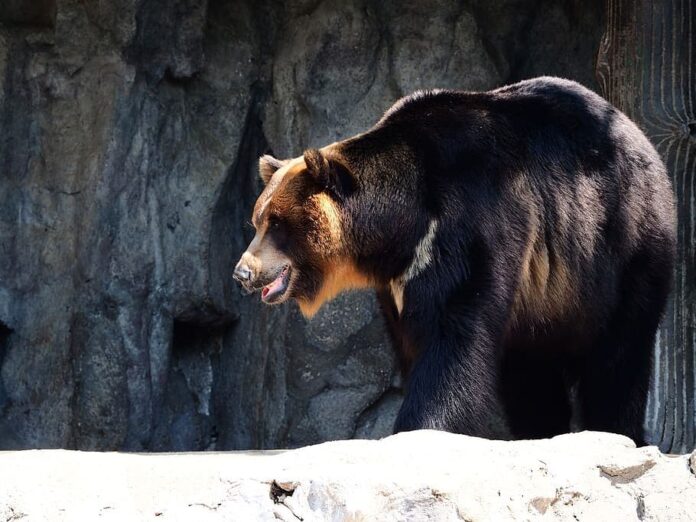
Where: Asia
Also goes by the names Asiatic black bear, moon bear, and white-chested bear, this bear species is native to Asia. An Asian black bear has black fur and a distinct creamy or whitish patch on its chest. Being medium-sized, it grows from 70 to 100 centimeters tall with a weight of 60 to 200 kilograms. The unique thing about them is that they are adaptive to the arboreal lifestyle. So they have powerful upper bodies that allow them to climb trees even if they have broken hind legs. At the same time, they also have large heel pads on their forefeet which allows them to walk upright.
The Asian black bear’s range is limited to Asia where it inhabits deciduous forests, mixed forests, and thornbrush forests. They climb rocks or trees to feed, hibernate, rest, sunbathe, and stay away from enemies at around 4.5 meters or higher. The interesting part is that break branches and use twigs to place under themselves when feeding on trees. Speaking of feeding, this omnivorous bear species feeds on everything from insects and grubs to fruits and vegetation.
The main threat to their habitats is the overcutting of forests for human settlement and other developments. This activity also removes their main sources of dens which forces them to den in rocks or on the ground. That makes them more vulnerable to brown bears, tigers, and hunters who illegally hunt them for their gallbladders, paws, and skin.
3Brown Bear
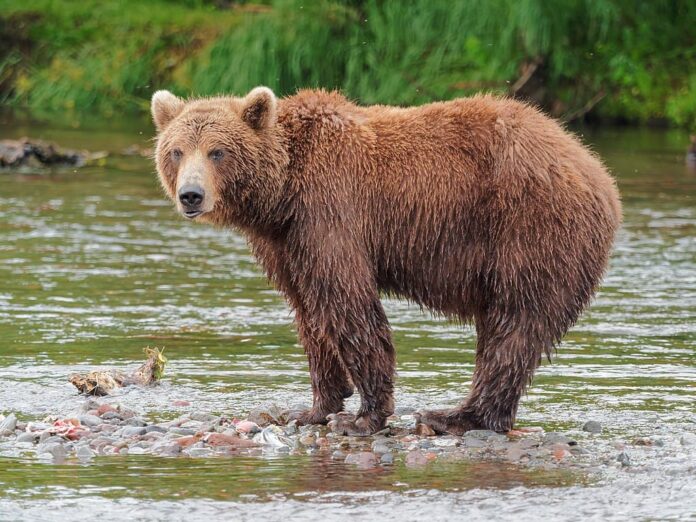
Where: Eurasia & North America
Brown bears are one of the most common and popular bears that we all know of. In North America, people call them grizzly bears or grizzly and there is also a subspecies called Kodiak bears as well. Depending on where they come from, brown bears are different in size. But generally, a brown bear is around 1.4 to 2.8 meters tall, weighing from 80 to 600 kilograms. While the name suggests the color, brown bears are not entirely brown. They can be cream, dark brown, reddish with silver-tipped hairs, or yellowish-brown with dark-colored legs.
When it comes to appearance, a brown bear looks both cuddly and intimidating. Their fluffy fur gives them such an adorable look but those large paws with long claws are something else. The large curved claws on their forelimbs can reach 5 to 6 centimeters long; one slap and you are done for. More than that, they have a hump at the top of their shoulders that is made entirely of muscle. This hump and the claws help them to dig their dens for hibernation.
Brown bears like to rest during the day and they need a good spot for that so they prefer semi-open country. The areas should also have a scattering of vegetation for them to rest in. Because they don’t have a preference in the regions, brown bears feed on a wide variety of meals. However, 90% of their diet comprises of vegetable matter.
By the look, you can already tell that they are on top of the food chain so their only predators are humans. People destroy their habitat and hunt them for fur. The only good thing is their population is doing well in the wild.
4Giant Panda
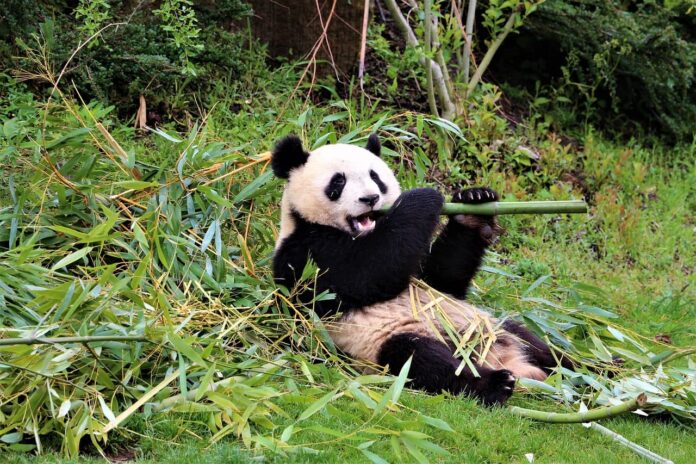
Where: China
Everybody knows a panda, the bear with a black and white coat and a stout body. A panda has black fur on its ears, eye patches, limbs, and shoulders while the rest of the coat is white. Its wooly coat keeps it warm in the cool forests where it inhabits. A giant panda usually grows up to around 1.2 to 1.9 meters long, weighing from 70 to 160 kilograms. This China’s national treasure can be big and heavy but they are skilled climbers and swimmers.
While their bear cousins feed on meat and vegetation, 99% of a giant’s diet is bamboo leaves and shoots. In the wild, they consume various grasses, wild tubers, and sometimes meat from birds and rodents, or even carrion. Some pandas also forage in farmland for kidney beans, pumpkin, wheat, and more. Pandas have extremely strong bite force, they can break bamboos with each bite which is so obvious how strong it is. Just so you know, their paws have 5 fingers and a thumb that helps them to hold bamboo while eating.
Endemic to China, the giant panda lives in a few mountain ranges in Central China, mainly in Sichuan. They are solitary and terrestrial so they spend their life roaming and feeding in the bamboo forests. Males and females will come together during the breeding season, and the males will leave after mating. Being a bear, having predators as an adult is not a thing because only humans hunt them. The good thing is that they are under protection so their population is doing okay.
5Polar Bear
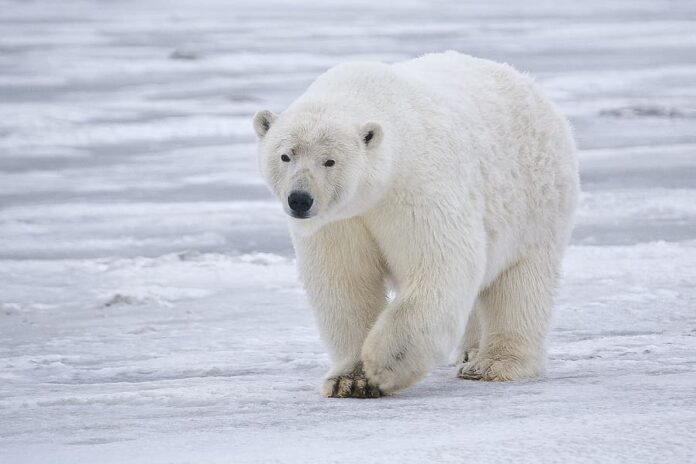
Where: Arctic
Just like pandas, polar bears are also among the most well-known bear species as well. Being the largest bear species, a polar bear can grow up to 2.5 meters long, weighing 300 to 800 kilograms. A polar bear has white or yellowish fur along with a very stout build. The most fearsome parts about them are their extremely sharp teeth and large paws. They have 32 to 42 teeth including 12 incisors, 4 canines, 8 to 16 premolars and 10 molars. Those sharp teeth are for cutting meat while the paws are for paddling in the water and walking on ice. A polar bear can run up to 20km/h and swim up to 6km/h.
The habitats of these bears are the Arctic including Alaska, Canada, Greenland, Russia, and the Svalbard Archipelago of Norway. Polar bears are pagophilic (preference for ice) and terrestrial, and they are fearsome ambush predators. A polar bear may stalk its prey on ice or in the water, or wait for prey to swim by. Seals are one of their favorite meals due to the energy-rich blubber that the animals have. Besides seals, they also feed on other arctic animals such as beluga whales, birds, fish, marine invertebrates, narwhals, walruses, etc. Hunting is rarely successful which is why they also scavenge carcasses, settle for smaller animals, or raid human garbage.
Being able to live in just cold areas is very unfortunate for the polar bears, considered the climate change. Other threats to their population are gas/oil development and pollution as well as malnutrition or starvation due to habitat loss.
6Spectacled Bear
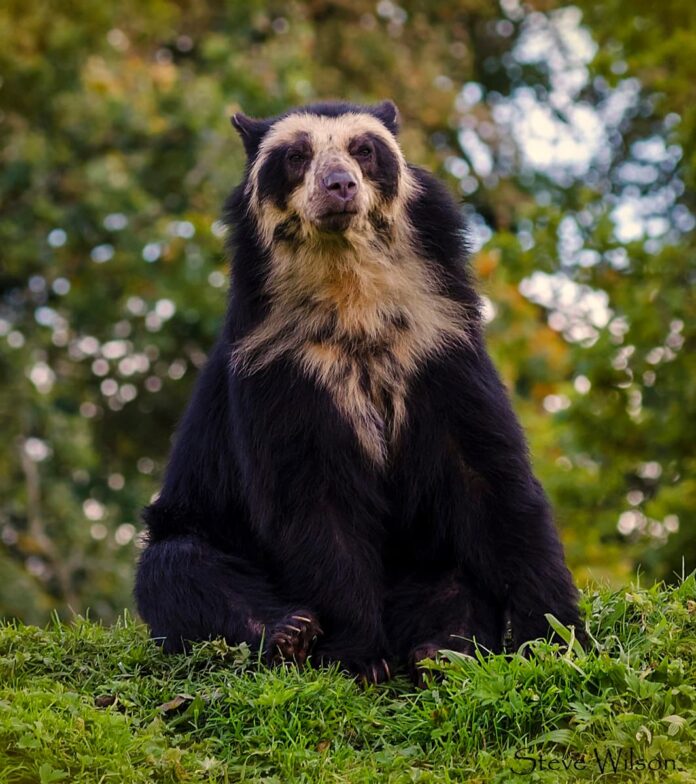
Where: South America
The spectacled bear goes by many other names such as Andean bear, mountain bear, or South American bear. It is the only living species of bear native to South America, and it is the largest carnivore there. An adult can range from 1.2 to 2 meters, weighing from 100 to 200 kilograms. A spectacled bear is black in color with a dark brown, jet black, or reddish hue. The most distinctive characteristic of this bear species is the beige or ginger markings across its face and upper chest. The markings on their faces leave the areas around the eyes, making the remaining black fur resemble spectacles; hence the name.
Since 5% of their diet is meat from birds, insects, and rodents, the rest is on fruits and vegetation. As primary vegetarians, they feed on berries, cacti, honey, and other fruits. Their jaws are extremely strong and wide which allows them to chew tough vegetation like orchid bulbs and tree bark. Spectacled bears have an extremely sensitive sense of smell, allowing them to detect ripe fruit right from the ground. Their climbing skill is also incredible as they can climb even the tallest trees where they live. They do so when they want to avoid humans, eat, rest, and so on.
Spectacled bears are a bear species native to the Andes Mountains in northern and western South America. The best habitats for them are humid to very humid montane forests where there are sufficient fruits. These solitary bears are not territorial but they tend to isolate themselves from one another to avoid competition. In areas that have abundant food sources, they may even feed together in small groups. Nowadays, they are facing threats by fragmentation, habitat destruction and degradation, and poaching in various regions within their range.
7Sloth Bear
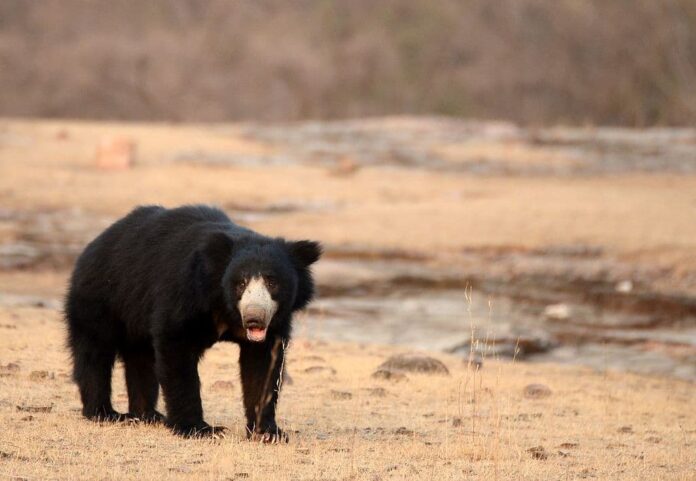
Where: Indian Subcontinent
The sloth bear or the Indian bear is a medium-sized bear that is 1.4 to 1.9 meters tall. Its fur is completely black, and it has long shaggy fur with a mane around its face. The most interesting part of this bear is the long lower lips that it can stretch over the outer edge of its nose. They don’t have upper incisors, and that allows them to suck up large numbers of insects with ease. More than that, their paws are very large with claws that measure up to 10 centimeters. Sloth bears walk slowly but they can gallop faster than running humans. They are aggressive and they are not afraid to attack humans if they need to.
The sloth bear is a unique myrmecophagous bear species that feeds on ants or termites but they also eat fruits. Sloth bears locate ants and termites by smell that allows them to detect grubs 1 meter below ground. They use their claws to scrape the mound, and then suck the termites through their muzzle. These bears are also excellent climbers, and they occasionally climb to feed and rest. Besides ants and mites, they also feed on honey, jackfruits, mangos, sugarcane, other plant matter, and even carrion.
Native to the Indian Subcontinent, their range is in India, the Terai of Nepal, Bhutan, and Sri Lanka. Within those ranges, they inhabit dry tropical forests, grasslands, moist tropical forests, savannas, and scrublands. Where they live, they may travel in pairs but they may also fight for food. The main threats to the population of these vulnerable bear species today are habitat degradation and habitat loss. People also poach them for illegal wildlife trade which reduces their number greatly.
Name Origin
Why “sloth” bear? Are they slow? Absolutely not, they got their name in the 1700s from the long lower lip they use to suck up insects. People only saw their appearance in a hide form and they assumed it to be a type of sloth. Turned out they were bears, so the name sloth bear stayed on since then.
8Sun Bear
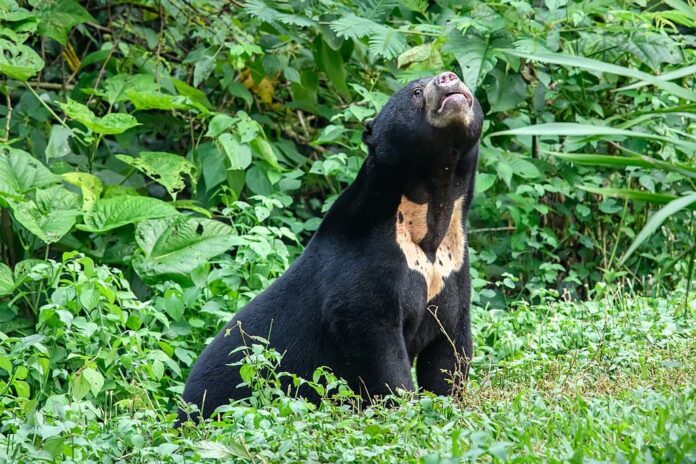
Where: Southeast Asia
Sun bears or honey bears are the smallest and least-known among the 8 bear species. Being the smallest, sun bears only stand to around 70 centimeters tall and weigh between 25 and 65 kilograms. Despite the size, these bears have a stocky build with large paws and strong curved claws. They have jet black fur but can also be gray or red, with a yellowish or white patch on the chest. Their sleek black coat is short to avoid overheating in the tropical weather but coarse and thick to protect them, from branches, rain, and twigs.
Not different from other bear species, honey bears are also excellent climbers. They go up in trees 2 to 7 meters above the ground to sleep or sunbathe. When it comes to the diet, honey bears feed on a number of things such as birds, insects, small rodents, sweet fruits, and termites. The coolest part is that they have a very long tongue that assists in extracting honey from bee nests. They love honey, and that is why they are also called honey bears.
Native to Southeast Asia, these bears inhabit tropical forests including lowland forests montane forests, tropical evergreen rainforests, and swamp habitats. Sun bears are excellent climbers, and they spend plenty of time in trees. People hunt sun bears for their gallbladders and other body parts for medicinal uses. Some poachers kill female nursing sun bears to sell their cubs in the pet trade. Apart from these, habitat destruction and illegal logging also affect their homes and population greatly.
Related Post: Biggest Carnivorous Bears

